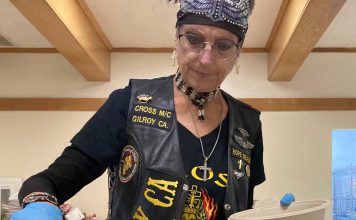GILROY
– Directors of Restorative Justice, one of South County’s most
popular youth crime prevention programs, are optimistic the program
will be spared from the looming budget cuts aimed at the county
probation department.
GILROY – Directors of Restorative Justice, one of South County’s most popular youth crime prevention programs, are optimistic the program will be spared from the looming budget cuts aimed at the county probation department.
A series of meetings involving the Department of Probation and the agencies involved with Restorative Justice will meet this week to decide the fate of the program which makes juvenile offenders pay for their crimes by working in the community.
For example, Restorative Justice forces juveniles caught doing graffiti to repaint and restore the property they damage.
“We’re working with everyone involved to make sure there is little or no impact (to Restorative Justice),” said Dolores Morales, the management analyst for Restorative Justice. “Right now we believe the cuts will be extremely minimal.”
In order to alleviate the county’s $160 million budget deficit, county supervisors have asked the probation department to reduce its annual budget by 13.5 percent. Restorative Justice is a branch of the probation department, but because of its close relationship with community-based agencies such as Gilroy’s Mexican American Community Services Agency (MACSA) and Gilroy Community Solutions, it should be able to survive the budget cuts with little or no damage, Morales said.
“South County has very strong community programs,” Morales said. “That’s one of the reasons (Restorative Justice) has been so successful there, and that’s why we are optimistic the program will not (be reduced).”
An alternative to the punitive justice system, the importance of Restorative Justice is not only that it restores the damage done by juvenile crime, but that it demonstrates to youth their role in the community, said Lisa DeSilva, the director of community and resources for Gilroy Community Solutions, the agency that provides the youth intervention workers for Restorative Justice in Gilroy, San Martin and Morgan Hill.
More than 290 kids from South County participated in the Restorative Justice program last year.
“It makes a direct cause and effect relationship between the youth and their crime,” DeSilva said. “(Restorative Justice) gives youth a chance to develop a sense into their connection to the community and how they can contribute in a positive way.”
Members of the probation department and several of the local community agencies involved with Restorative Justice will meet Thursday to discuss its upcoming budget proposal to the county.












